
Home on the Road
From superyacht-like big rigs and buses to quaint pieds-à-terre on wheels and an apocalypse-ready adventure vehicle, the mode of transport you choose for your next road trip can be as enjoyable as where it takes you.
With the focus on travel shifting toward greater privacy and more isolated modes of transportation, recreational vehicles, motor homes, and camper-trailers provide a secluded way to explore scenic highways and visit remote locales. For many would-be buyers, RVs may conjure images from National Lampoon’s Christmas Vacation, but rest assured that across America, RV parks and motor home campsites now offer amenities more akin to staying in high-end resorts
with waterfront views, clubhouses, and luxury services. The following vehicles heighten the motor travel experience with plush beds, stand-up showers,
and even Wi-Fi.
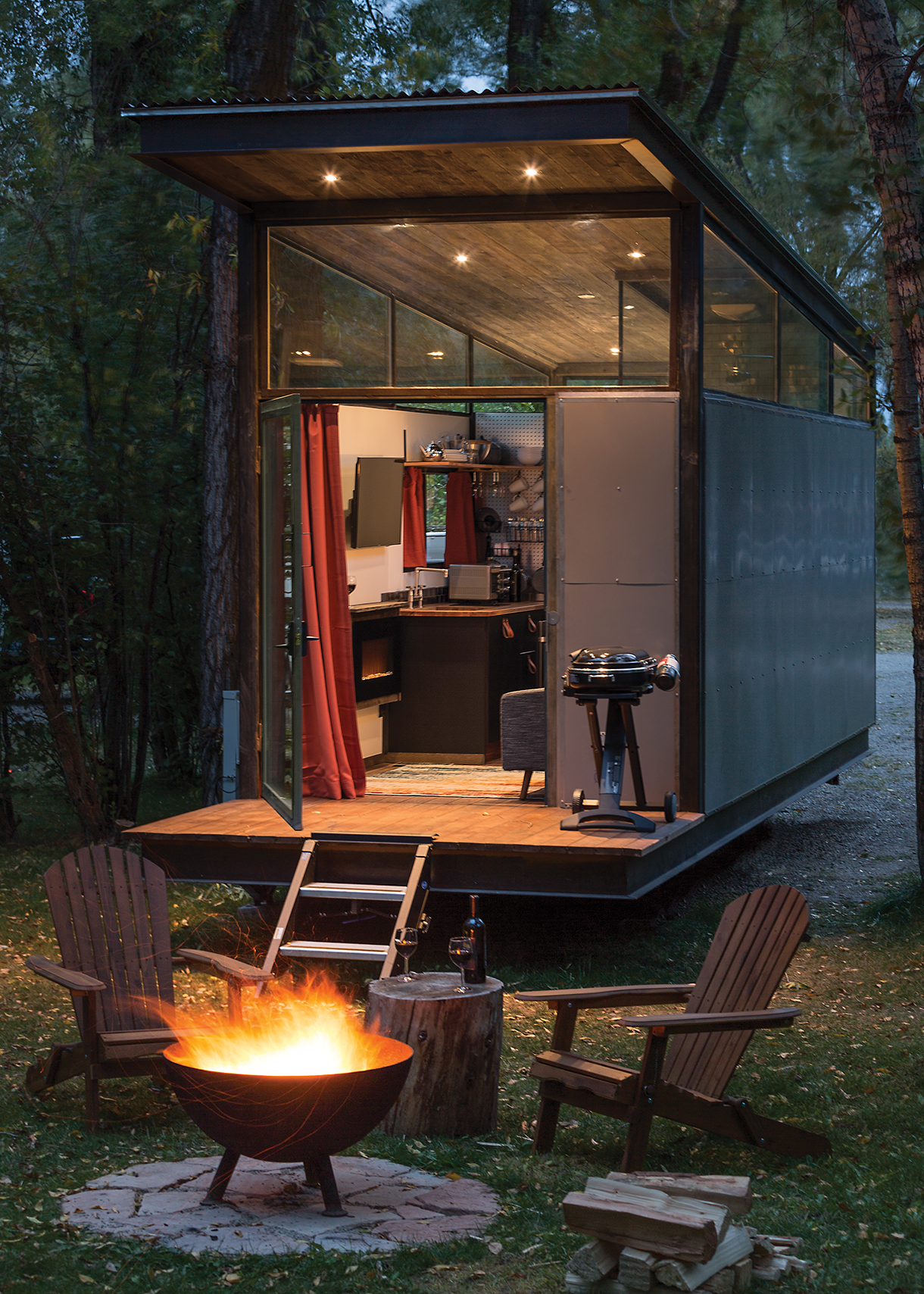
ROADHAUS WEDGE
Set up like a small studio apartment, the RoadHaus Wedge camper trailer is named for its modern roofline sloping front to back. The 250-square-foot mobile home/camper hybrid is certified to be towed and parked in RV parks across the country, but is designed to be a stationary home office or guesthouse. It feels much larger than it is, with a minimal but highly functional design. The bedroom, with space for a queen-size bed and a TV on the wall, is swathed in natural light thanks to the floating roof design with 360-degree windows.
The open feel extends to the living room, kitchenette, and bathroom, the latter of which puts the toilet and sink in the same tiled space as the shower, equipped with a rainfall head and a sprayer hose. The kitchenette fits a half-size fridge, freezer, microwave, sink, and two-top electric burner, while the living room features a couch and a wall-mounted TV, with a gas or electric fireplace as an optional upgrade (also available is an HVAC system). Open the glass patio door to an optional front deck for indoor-outdoor living. $87,800; wheelhaus.com
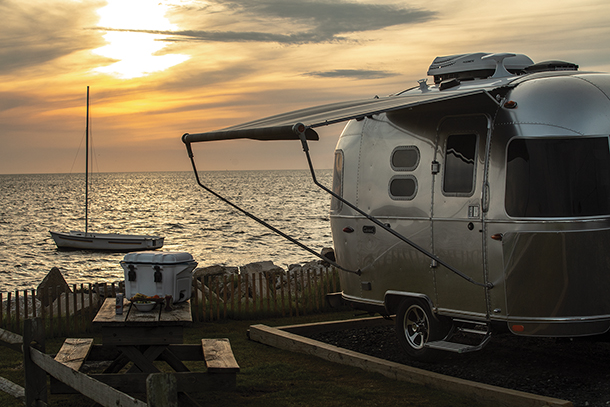
AIRSTREAM CARAVEL
Last year, iconic camper-trailer maker Airstream reintroduced two compact single-axle versions of its popular silver bullet. Originally launched in the 1960s, the small, easy-to-tow Caravel and Bambi models are virtually identical, each available in two different lengths (from 16 to 22 feet) and one of four camper configurations that sleep as many as four people.
Upgrades unique to the Caravel include a rear bumper, improved bearings and suspension, a powered hitch jack, larger windows, and higher-quality materials throughout the interior. As with Airstream’s larger models, the Caravel’s interior is stylish and functional: a galley with stainless-steel gas stove and Moen faucet; a full-width bathroom with standalone shower (in select configurations); and two different design themes that are decidedly sleek and contemporary in contrast to the iconic 1930s design of the aluminum outer shell. Onboard tech includes an electronic thermostat, a JL sound system and LG TVs, dimmable LED lighting, and a solar panel on the roof for extending electric power while off the grid. From $60,900; airstream.com
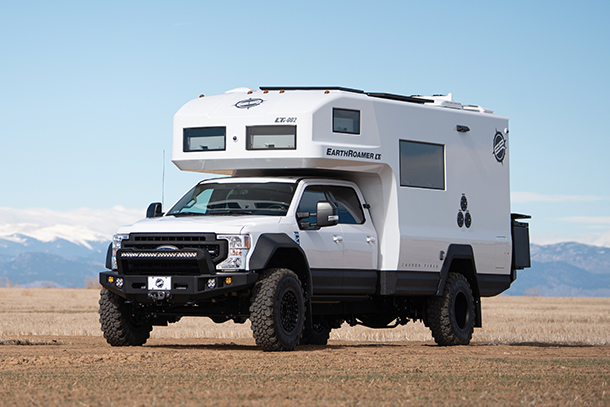
EARTHROAMER LTI
Whereas most RVs and campers are largely confined to paved roads and areas within a gas tank’s ride to basic services, the EarthRoamer LTi can go pretty much anywhere in any weather for long periods between refueling, making it ideal for off-road adventures and zombie apocalypses alike. New for this year, the LTi model takes a Ford F550 Super Duty Crew Cab, four-wheel-drive truck chassis and adds to it a carbon-fiber body and robust onboard systems. Those include a 95-gallon diesel tank, a 100-gallon freshwater tank, a rooftop solar panel array, and a bank of lithium-ion batteries able to store 11,000 watt-hours of electric power.
Passengers enter and egress via dropdown stairs at the side and the passthrough between the camper and the chassis. The camper is nearly 7 feet tall and can sleep as many as four people: two in the king-size bed in the over-cab bunk area (with a roof hatch for sleeping under the stars) and two on sofas or convertible beds in the living area. Other amenities and options include a full-height shower, various kitchen configurations, and infrared video security. From $590,000; earthroamer.com
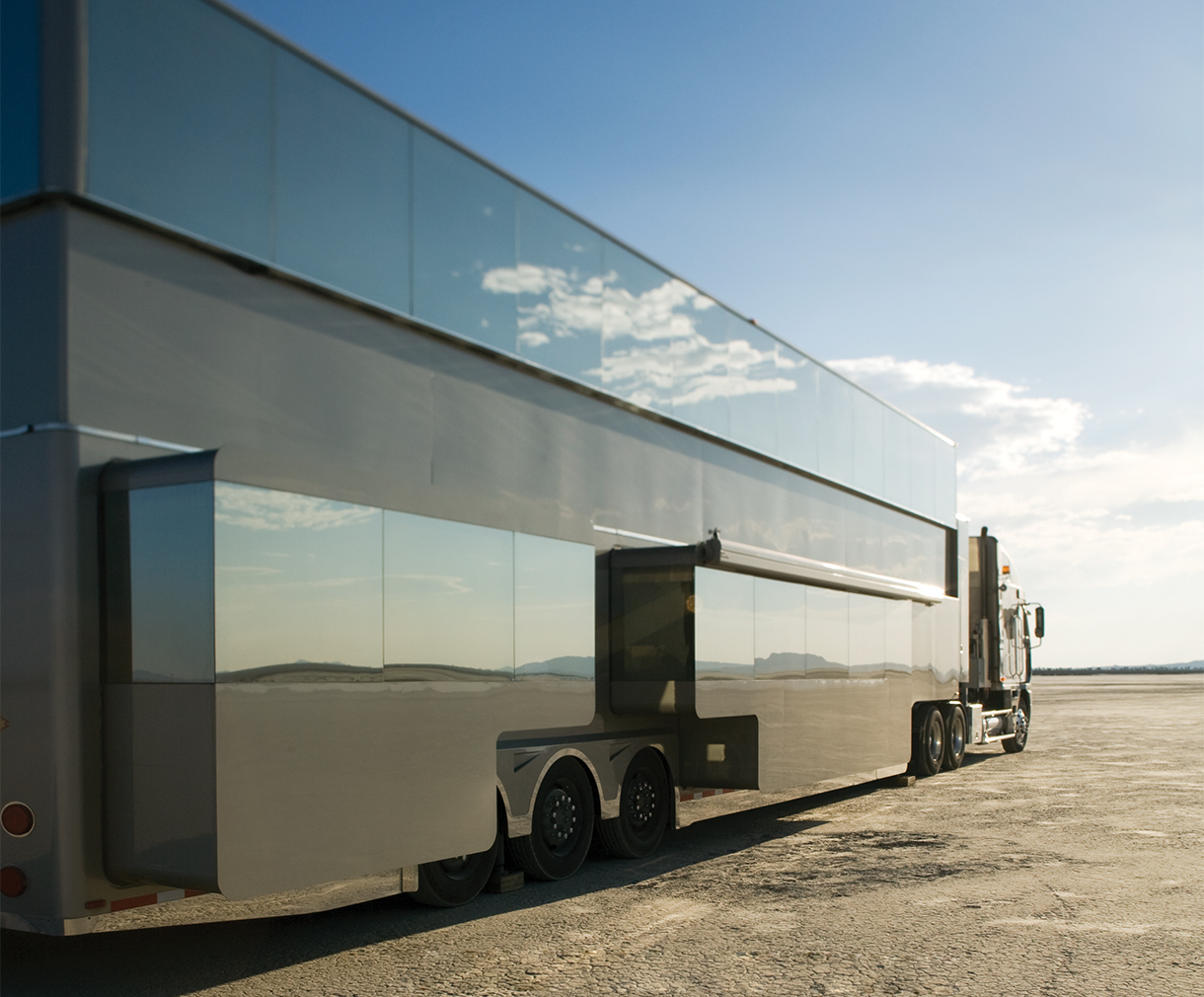
ANDERSON MOBILE ESTATES
These superyachts of the highways are built on big rig platforms. The large format allows as much as 1,200 square feet of living space with which “you can do whatever you want,” according to company founder Ron Anderson—who has been producing these behemoth and lavishly appointed vehicles for more than 30 years. A key feature of the mobile estates is a patented system of computer-controlled electric motors that literally raise the roof, creating an entire second story of living space, which is often used for private bedrooms and can be walled in privacy glass that turns from transparent to opaque. Another option above this second story is a roof deck with railings that raise and lower. Add to that first-floor slide-outs and retractable awnings and you have a vacation home that goes anywhere with roads.
Anderson says that the only real limitation for interior design is weight, but beyond that, they can accommodate just about anything that will fit, from recording studios to entertainment areas. Several are available for rent. Price upon request; andersonmobileestates.com
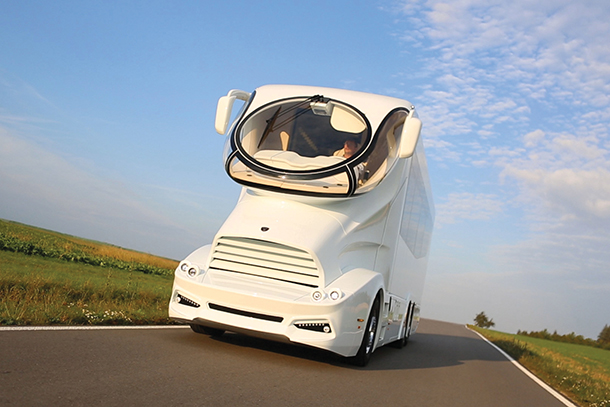
MARCHI MOBILE PALAZZO SUPERIOR
There exist varying levels of opulence and in the case of MARCHI Mobile’s eleMMent series of recreational vehicles, extravagance looms in spades. As the Palazzo Superior’s name suggests, it is akin to a small palace on wheels. The some 28-ton vehicle looks like a hybrid of a big rig and a tour bus, with a distinctive cab design made from carbon fiber that places the driver inside a spaceship-like bubble. The body is nearly 2.5 inches thick and highly insulated for a quiet cabin that features integrated furniture and heated floors.
Large slide-outs on each side expand the living area to 732 square feet, affording room for a large, U-shaped leather sofa, a kitchenette, and a large circular bedroom with a king-size mattress from British bed supplier Hypnos. Onboard entertainment options include 42-inch LED TVs in the bedroom and lounge, a media server, and two Steinway Lyngdorf audio systems. A highlight is its rooftop deck, with walls and a retractable awning that rise up at the touch of the button. The German company works on a lead time of 8 to 12 months. From $5 million; marchi-mobile.com
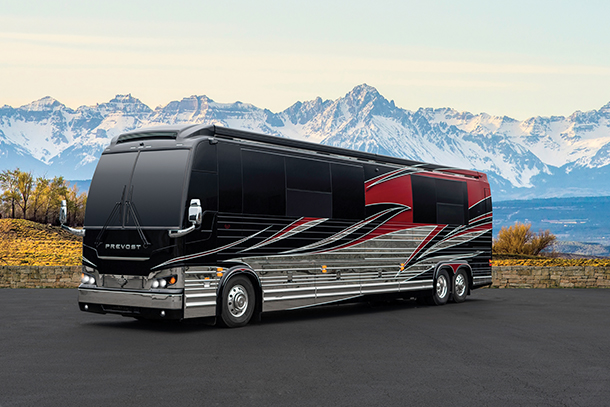
PREVOST X3-45 VIP
Like a private jet on the road, its 45-foot-long stainless steel and composite exterior essentially a fuselage without wings, the Prevost X3-45 is a bus—albeit one with a cabin wider than 7 feet and taller than 6.5 feet that provides enough space for a plush interior commensurate with those of the nicest airplane cabins. Prevost, which is owned by Volvo, built the example shown here as an empty chassis for premier coachbuilders Marathon Coaches. The new X3 comes with increased fuel efficiency compared to previous models, as well as improved safety features, 3 more inches of ceiling height, and other enhancements.
The bedroom features a retractable king-size bed, walk-in closet, and full bathroom with stand-up rainfall shower. Slide-outs in the salon and bedroom expand those spaces while parked. For travelers accustomed to private jets and superyachts, the materials can be customized. The tech package includes Wi-Fi, 4K Apple TV, and control of lights, blinds, temperature, and audio/video via an iPad. From $2.2 million as shown; prevostcar.com, marathoncoach.com




